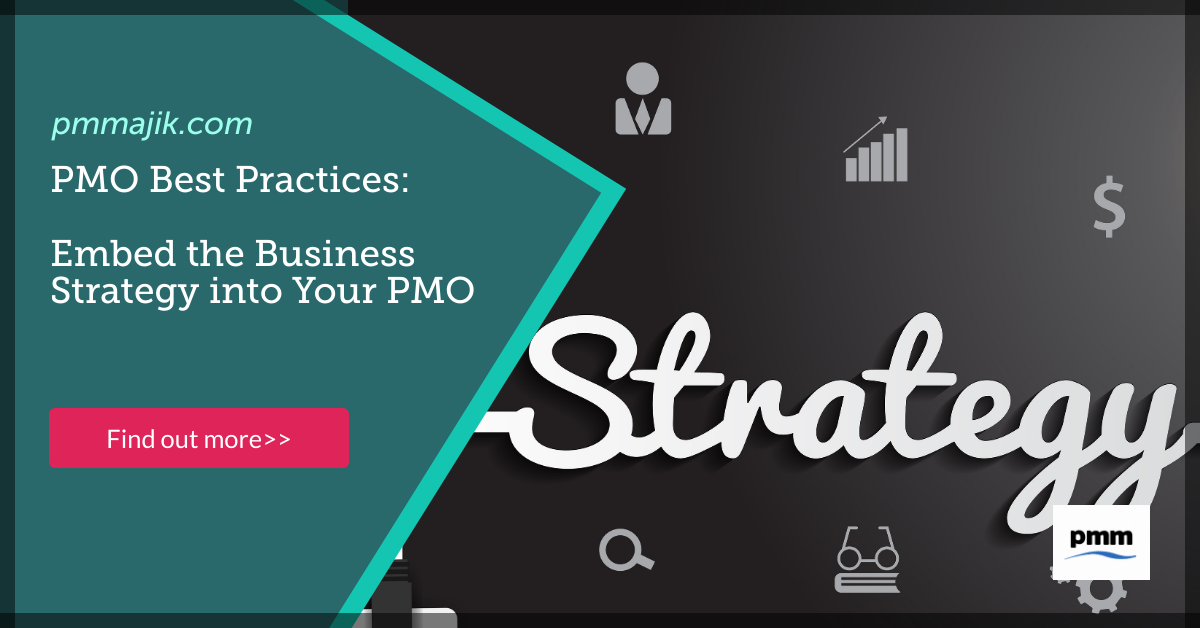Projects need to be delivered on time and on budget, but your project management office (PMO) needs to be thinking about more than just time and money. The last PMO best practice we’re looking at is embedding the business strategy into your office.
The business in which you operate will likely have much broader goals than profits, such as environmental, social, and governance goals. The strategy might be to move into another vertical or to enter a new market. Your work in your PMO should support these aims.
So you can build the business strategy into your PMO, we’ll be looking at:
- How different PMO types can embed business strategies
- How to go about embedding the business’ strategy into projects
- Why it’s important for your PMO to be strategically aligned
How can my PMO type work towards the business’ strategy?
There are a range of PMO types, the type that you operate will depend on factors like what the business is aiming for and the reason the PMO was needed in the first place.
Different PMO types will work with the business strategy in different ways. For example:
- A business-focussed PMO can make strategic decisions about which projects it commissions, ensuring every project the office runs aligns with the business goals.
- A compliance PMO can monitor each project to ensure that the business strategy is being implemented along with the core project goals.
- A directive PMO can ensure that the project managers it works with are aware of the business goals and direct them to deliver the goals along with the project end result.
Each PMO type supports projects in different ways, but they can all make sure that the business goals are being met by all the projects they work on.
4 steps to embedding the business strategy into your PMO
Step 1: Understand the business strategy
This may seem obvious, but you first need to know what the business goals, mission, and values are. A mature business should have these clearly laid out and have everyone in the business working towards them. A start-up may not have listed the goals and mission succinctly.
Work with your PMO’s C-suite sponsor to understand how your office fits in with the overall business strategy. This will ensure that your office is working to the right ends and will be able to add value where it is expected to.
Step 2: Align projects to the values
Next, you need to evaluate all your current projects and ones in the pipeline to see how they currently align with the business goals. This is your chance to amend or adjust current projects so that they deliver what is needed.
A business-focussed PMO then needs to set criteria for selecting projects with the business strategy in mind. Compliance or directive PMO should be assessing projects and plans as they come in to see how they can contribute to the strategy and adjust priorities accordingly.
Step 3: Build the strategy into KPIs
We’ve already looked at how having relevant KPIs is important for a PMO. That relevancy can be derived from matching with the business strategy.
For example, if sustainability is a key business goal, then you can make sure that recycling and green energy use are both KPIs for a project to work towards. If the business strategy is to open an office in North America, you can target the use of suppliers from that area to build relationships ahead of time.
Step 4: Report on strategic alignment
Make sure that when your PMO reports its results to the C-suite, you highlight the strategic relevance. This demonstrates a wider awareness of the business and makes sure the business leaders can see the value of your work.
Reporting on how each project delivered strategic value during the project closing process will also ensure projects and their managers are accountable for matching up with the business aims.
Why is it important to embed business strategy into a PMO?
Your PMO doesn’t function in a vacuum – your office needs to deliver results that line up with what the business wants, and that isn’t all about profits. It’s a PMO best practice to embed the business strategy into projects to make sure you’re adding value where it is needed and supporting the future of the business.






